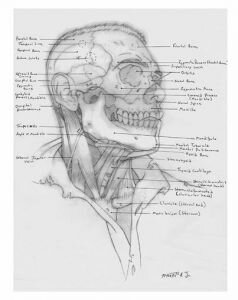THE ANATOMY OF A CRIME NOVEL
I always start with the heart. I make my incisions and pull back the rib cage, and there it is: sitting in a sack right next to the aorta. This is the machinery on which everything else depends. Plot, characters, setting: they don’t mean nothin’ without heart. Why should readers care about this story? How will it grab them on an emotional level? A novel’s gotta have heart or it’s doomed from the beginning.
Now the lungs. They feed the heart and everything else -- bring in fresh air and keep the body from getting stale. If a story ain’t fresh, if it’s one cliché after another, then what’s the use of reading it? How to make it fresh is part of the challenge, but any novelist with a pulse knows you can’t offer folks the same dead air and call it a breeze.
You’d think plot would come from the brain, and it does at the beginning. There’s got to be an idea to work with, after all. But the tricky part about plot is taking it from concept to design, laying down the pipes and letting them course through the body, figuring out how all those blood vessels connect with one another, how they serve heart and mind, gut and muscle. It ain’t easy. It’s rare for those vessels to fit together right the first time. One can’t be afraid to rip ‘em out and start all over again if that’s what it takes. Because an idea for a good novel is just an idea. These are the highways, avenues, and side streets that make it happen.
Tone, atmosphere, and setting take place in the nervous system -- the five senses. Wherever the novel takes the reader, it needs to feel real. It’s important to paint a picture in their minds with sights and sounds, the feel of the world against their skin. Best not to go on and on about it, though. The details need to be just rich enough that the reader isn’t seeing the pages or tablet in front of them any longer, but rather the inside of their own imagination. It’s a delicate feature, detail. Anything more or anything less pulls them out of the story. There’s a limit to how many times they’ll forgive me for that.
Now we’re gonna get into the guts, and this can get a bit messy. Just like plot, characters are born in the brain but they don’t live there. My job is not to tell the reader about a hero or villain, but rather to make them feel those characters on a visceral level so they can judge for themselves. I may be the storyteller, but it’s the reader’s story to interpret the way they want. I’m not going to insult them by doing it for them. Everything important -- characters included -- should resonate in the gut.
There are other things. Bone and cartilage are structure. Without them, everything falls apart. Skin, teeth, and hair are language. If they don’t match the type of body I’m constructing, then that’s a problem. And since this is a crime novel, I’ll need to inject a hefty dose of adrenalin to keep things moving. It’s complicated, putting all this together. But that’s the challenge and that’s the thrill of watching a creature come to life.
Even then, I never know exactly what I’ve created until it takes that first breath, rises from the table, and starts to move about. I open the door, watch as it lurches out into the world, and hope for the best. A thing like that can’t be held captive for long. It’ll be back, though, once it figures out who’s responsible for its existence. Because that’s part of this too, you know. Late one night it’ll come for me: pushing open my bedroom door, staring at me across the darkness.
And one way or another, I'll have to answer for what I've done.

